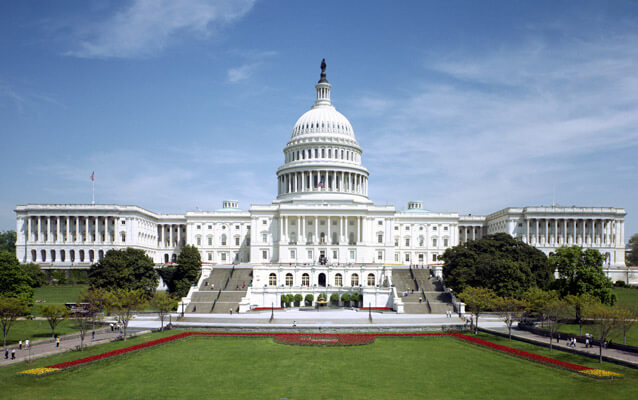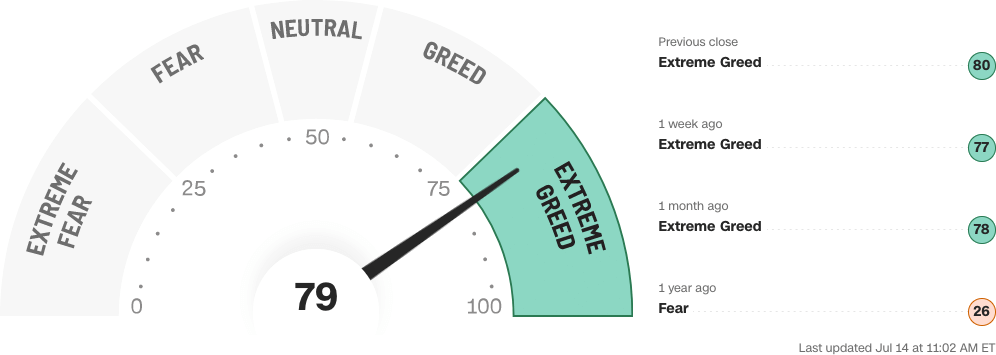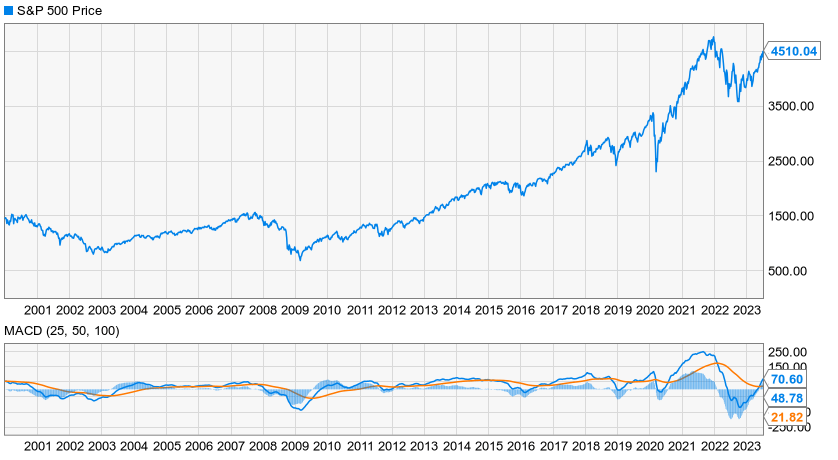Market Overview
This months models are posted.
Your tax dollars at work, or at waste?
In the first two years of Joe Biden’s presidency, he had enough friends on Capitol Hill to push through most of his spending priorities. These Democratic majorities were razor-thin, but still adequate to pass five bills that poured federal money into the economy.
While one could argue that some or all of this was needed to jump-start an economy flattened by the Covid-19 pandemic, one could also engage in reasoned counterarguments. With the pandemic in the rearview mirror, did we really need more stimulus? Were these newly funded programs the most efficient way to get money to people who really needed it? Isn’t all this spending an invitation to fraud and waste?
And, of course, doesn’t the act of dumping billions or trillions of dollars into the economy inevitably devalue each dollar already in circulation? Won’t all this pump-priming lead to inflation?
At the start of this year, Republicans regained control of the House of Representatives, where all spending bills originate. There’s little chance that any of the president’s further budgetary objectives will be met by the 118th Congress, backed by a conservative Supreme Court majority. So maybe this is a good time to look at how the money allocated by the 117th Congress is being spent.
Tallying up
Here’s a list of Biden’s five major appropriations in descending magnitude order. It excludes both business-as-usual annual budget bills and monies targeted by executive order. EOs are generally small-bore by comparison; the exception, a proposed $400 billion student debt forgiveness program, was blocked by the Supreme Court and never went into effect. Supplemental aid packages for Ukrainian defense are also too small to include here.
- American Rescue Plan: This was the $1.9 trillion Covid-response stimulus passed at the beginning of the Biden administration, on top of the comparable $2.8 trillion CARES Act passed during Donald Trump’s term as president. The American Rescue Plan extended unemployment benefits, provided $1,400 stimulus checks to individuals, bankrolled emergency paid leave, expanded some widely claimed tax credits, extended housing assistance and increased food stamp benefits. It also provided grants to businesses, schools and county governments, as well as public health agencies and businesses focused on fighting Covid. One key provision that hasn’t gotten the attention it deserves is the $86 billion bailout for almost 200 near-bankrupt multi-employer pension funds, collectively covering 10.7 million participants.
- Infrastructure Investment and Jobs Act: Although the headline number for this appropriation is $1.2 trillion, most of that is money Congress was going to approve for highway improvements anyway. Still, it earmarks $550 billion in new spending. The statute, also known as the Bipartisan Infrastructure Law, funds not only roads, bridges, railways and local transit, but also electrical grid improvements, broadband access and the creation of a nationwide network of electric vehicle charging stations. What has gone underreported is that almost one-tenth of the new spending is going toward such water infrastructure projects as protecting wetlands and replacing lead pipes between local reservoirs and household taps.
- Inflation Reduction Act: Originally the multi-trillion dollar Build Back Better plan, it was trimmed down to $891 billion. The money goes to investments and tax credits for solar paneling, nuclear power, home energy efficiency, electric vehicles and zero-emissions manufacturing. It also reduced drug prices.
- PACT Act: Don’t feel bad if you don’t know this one by name. It’s not every administration that can pass a $797 billion bill and have nobody notice. This is the one that funds health care for veterans who were exposed to toxic chemicals during their military service. It was passed in response to the Department of Veterans Affairs’ routine denial of disability claims stemming from exposure to burn pit fumes.
- CHIPS and Science Act: A comparative bargain at $280 billion, the CHIPS Act boosts domestic research in and manufacturing of semiconductors. Not only do actual chip makers benefit, but so do telecommunications firms and zero-emissions technology startups. Likewise, funds accrue to such public-sector agencies as NASA, the National Institute for Standards and Technology, the National Science Foundation and four Cabinet-level departments: Defense, State, Commerce and Energy. It is no coincidence that these are the entities most likely to engage in public-private partnerships.

A burn pit for toxins in Iraq. Credit: Stars and Stripes

A burn pit for taxes in Washington. Credit: National Parks Service
A little perspective
These are immense numbers. It’s important to understand that these all represent long-term programs, so only a fraction of the number is spent in any given year.
The American Rescue Plan would be the exception. It was frontloaded to get checks in the mail immediately. The results were predictable. While many low-income Americans benefited from the direct payments targeted at them, fraud and waste were rampant. According to the Associated Press, roughly one dollar out of every five was stolen or misspent. While a little bit of corruption and incompetence is figured into any appropriation bill, the American Rescue Plan earned a place in history for the sheer scale of it all. On the plus side, the bill injected $47.3 billion into insolvent industry-wide and union-sponsored pension plans, preserving the retirements of more than 700,000 American workers. Still, more than a hundred funds remain on the waiting list, and the money is now more than half gone.
Less than one-fourth of the projects to be funded by the infrastructure law have actually seen a shovel. But that’s as expected. While there is no firm date at which the law sunsets, the general consensus is that it’ll take almost 10 years to complete – and presumably pay for – the whole to-do list. So, when you see that $1.2 trillion number, then realize that only (“only”!) $550 billion of it is new spending and that it could take a decade to spend it, we’re really talking about adding an average of $55 billion to a federal budget of a $6.3 trillion-with-a-T annual budget. You wouldn’t want it coming out of your brokerage account, but it’s practically a rounding error by Washington standards.
The Inflation Reduction Act and CHIPS Act both have a stated shelf life of 10 years, so that’s another $89 billion and $28 billion annually. The CHIPS money is likely to be fairly evenly spread out, considering that much of it is in support of big capital projects planned by major semiconductor manufacturers.
The PACT Act is an ongoing program, so the portion of that $797 billion spent in a given year is rather minimal as a proportion of the overall budget – and we’re hard-pressed to think of a better use for it.
Paying the price
Regardless of how long it takes to spend the money, though, it’s irresponsible to put it all on the national credit card. And, while a significant amount of these $4.5 trillion in new spending will be paid for by bonds – and at a much higher interest rate than we’ve seen in recent memory – some will also be offset by new revenues. And by “revenues,” we mean taxes, although not as much as one might assume.
The American Rescue Plan was paid for in part by levies against corporations and wealthy individuals. But the $60 billion raised in that fashion was a drop in the $1.9 trillion ocean. Similarly, the estimated $1.2 billion to be raised in chemical excise taxes is one-tenth of 1% of the cost of the infrastructure law.
Among these major spending bills, the Inflation Reduction Act is unique in one aspect: It is widely recognized by economists across the political spectrum for its likelihood of easing the federal budget deficit. Whether it’ll actually reduce inflation is another question, but that’s a good start at least.
So pretty much all the rest of this is being paid for with additional federal debt, which could have the cumulative effect of making Washington a riskier borrower. Investors might decide they need more of a premium before lending any more money; that is, they might demand that higher interest rates be paid on the debt.
Still, there is the theoretically sound but dodgy-in-practice game of determining economic benefits from spending – sorry, “investing” – this money. Doubtlessly, someone’s going to get paid, and that paycheck is going to get taxed. So will all the goods this new income gets spent on. And the people who sell those goods will have more taxable income, and so on and so on. It’s called the multiplier effect. It’s a real thing, but it’s not money in the bank. “It’ll pay for itself” is wishful thinking on the part of the people proposing any appropriation imaginable. The opposition will always say “It’s a waste of money,” and both sides will have experts and models to “prove” their point.
But let’s backtrack to our quick mention of inflation and interest rates. It’s Econ 101, right? Pumping money into the economy raises prices. And certainly, we’ve had a major bout with inflation recently. Higher prices were driven, at least in part, by supply chain issues and the global economic uncertainty spinning off from the war in Ukraine. You could also chalk some of it up to a labor shortage resulting in higher nominal wages, a situation which tends to raise prices in the long run. But that doesn’t get the White House off the hook entirely. The Federal Reserve estimates that about one-third of last year’s peak inflation was attributable to fiscal stimulus, lumping the CARES Act and American Recovery Plan together. Still, inflation peaked at 9% annualized, and is currently down to 3%. That’s in line with the long-term average but still a lot higher than the Federal Reserve’s 2% target.
That might be in part because of the Fed’s actions. We’ve been focused so much on fiscal policy here, that we’ve ignored monetary policy. The central bank is still raising target interest rates in order to cool down the same economy that all of these spending packages might be heating up. And that’s fine, until you consider the endgame. The Fed might not know its job is done until the U.S. economy lapses into recession. At the moment, it looks like the right hand and the left hand are working together and an economic soft landing is possible. Still, that’s a difficult trick to pull off.
At the close
It’s inevitable that government largesse will benefit some companies, industries and sectors more than others. For example, it’s obvious that the CHIPS Act is going to mean free money for the IT hardware industry. The infrastructure law is a giveaway to companies that engage in these kinds of projects as well as the equipment makers that roll out the machines needed to get the jobs done. Clean energy companies are going to rake in Inflation Reduction Act funds.
What other economic sectors will benefit, and how? Which will be at a disadvantage? And where should you be placing your investment dollars to secure a comfortable retirement? These are questions you might want to discuss with a trusted financial advisor.





